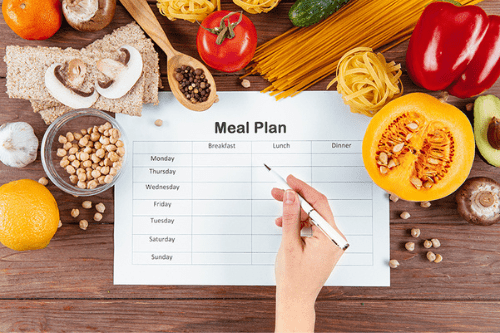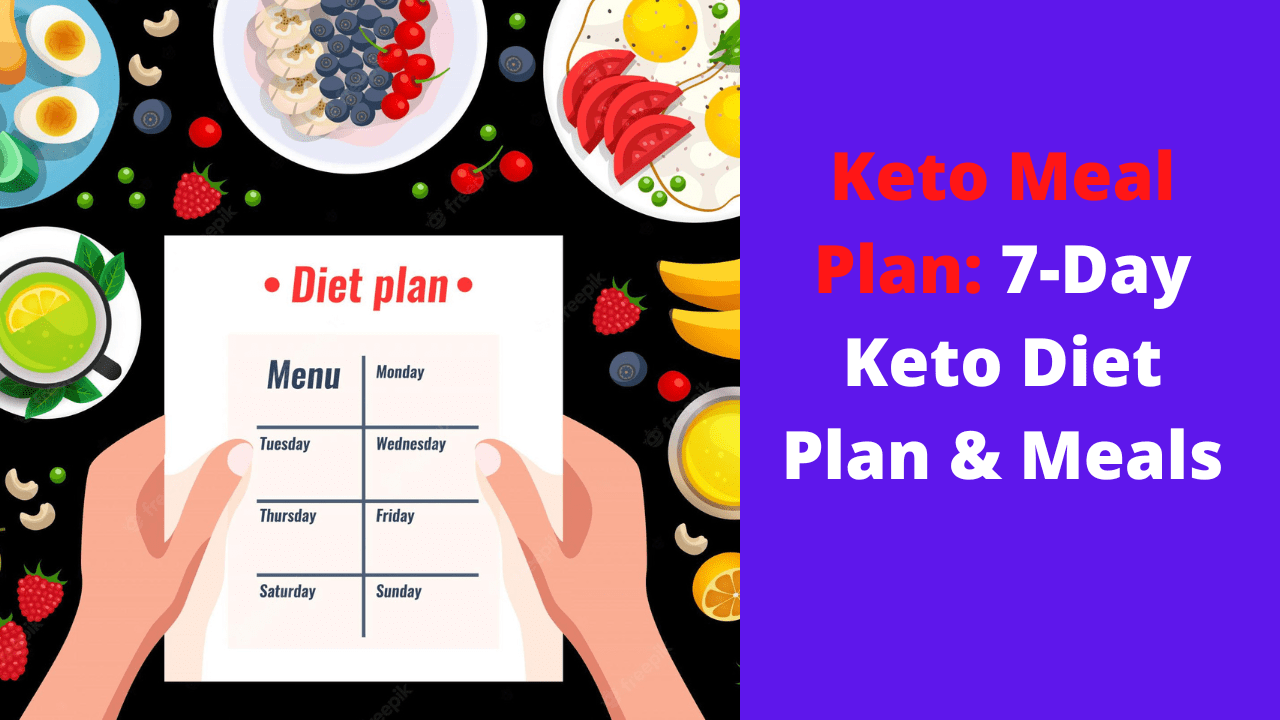The keto diet is still a well-liked eating plan for those who want to get in shape, stabilise their blood sugar and insulin levels, and, in some circumstances, lower their chance of developing type 2 diabetes or even reverse it.
These health benefits are made possible by the keto diet, which places a focus on consuming a lot of fat and restricting carbohydrates (up to 90 percent of your diet, in some cases).
Your metabolism can be trained to burn fat for energy instead of sugars and carbohydrates by changing the macronutrients you consume. You might be able to burn your body’s fat reserves more effectively as a result. This state, known as ketosis, occurs when your body produces ketones for energy instead of fat. You have reached ketosis when your blood ketone levels are greater than 0.5 millimoles per litre.
This 7-day meal plan will serve to provide you some guidance about what to eat for breakfast, lunch, and supper on a low carb, high fat diet plan, whether you’ve been following the keto diet for years or you’re a newbie.
Table of Contents
What is Keto Diet Plan? (Keto Meal)
A keto meal is one that has less than 50 g of net carbs per day or less than 50 g of total carbs per meal. Total carbs less fibre equals net carbs.
Plants contain fibre, which is present in plants and crucial to incorporate in a ketogenic diet because it protects gut bacteria, enhances digestion, and prevents constipation.
Proteins make up a smaller portion of daily calories on the ketogenic diet than fats. The keto diet emphasises a lot of meat, fish, eggs, and dairy products.
When the body is forced to use fat as fuel because it cannot get its energy from carbohydrates. As a result, the body begins to accumulate acids known as ketones. As a result, the body enters a condition of ketosis.
A 2012 study found that a ketogenic diet may lower fasting insulin levels, waist circumference, and fat mass.
A low carbohydrate diet, like the keto diet, may also help to reduce some of the main risk factors for heart disease, such as high blood pressure, low-density lipoprotein cholesterol, and triglycerides, according to a 2012 assessment of 23 studies.
For a predetermined period of time, many people adhere to the keto diet before changing their diet to incorporate more carbohydrates and less fat.
7-Day Keto Diet Plan & Meals

Keto Diet Meal Plan: Day 1
- Breakfast: Coconut milk, eggs, and almond flour pancakes with fresh fruit.
- Lunch: BLT salad with grilled chicken, tomatoes, and bacon over romaine lettuce that has been chopped.
- Dinner: Cabbage soup with sausage, greens, and melted parmesan.
Keto Diet Meal Plan: Day 2
- Breakfast: Full-fat coconut yoghurt with mixed nuts and berries for breakfast.
- Lunch: Tuna salad on an avocado boat for lunch.
- Dinner: Dinner will be zucchini noodles and tomato sauce with chicken parmesan.
Keto Diet Meal Plan: Day 3
- Breakfast: Smoked salmon, avocado, and toasted keto bread.
- Lunch: Lunch will consist of a taco salad with diced lettuce, ground turkey, tomatoes, red onions, and Monterey jack cheese.
- Dinner: Broccoli and cheese soup for dinner.
Keto Diet Meal Plan: Day 4
- Breakfast: Keto granola with coconut milk for breakfast.
- Lunch: Lunch will be a romaine, turkey, cheese, tomato, and mayo lettuce wrap sandwich.
- Dinner: Dinner will be spaghetti squash boats with melted mozzarella, tomato sauce, and shrimp.
Keto Diet Meal Plan: Day 5
- Breakfast: Eggs scrambled with crème fraiche and chives for breakfast.
- Lunch:: Lunch will be grilled chicken over zucchini noodles with pesto.
- Dinner: Dinner will be bacon-wrapped cheeseburgers with homemade aioli.
Keto Diet Meal Plan: Day 6
- Breakfast: An avocado, bacon, fried eggs, and keto bread sandwich.
- Lunch: Lunch will be broccoli, chicken, eggs, and cauliflower fried rice.
- Dinner: Dinner will be lettuce wraps filled with stir-fried ground pork and onions with soy sauce and sriracha.
Keto Diet Meal Plan: Day 7
- Breakfast: Smoothie for breakfast made with coconut milk, yoghurt, and frozen strawberries.
- Lunch: Lunch will be a ham, cheese, and spinach quiche.
- Dinner: Dinner will be zucchini boats stuffed with ground meat, sausage, and cheese with an Italian taste.
Tips for The Following Keto Diet
The fundamental objective of a ketogenic diet is to consume little carbohydrates and give preference to fats. It’s crucial to consume enough protein without going overboard in order to maintain muscular mass.
Naturally, not all fats are made equal. To promote heart and brain health, it’s best to pick less processed fats whether you’re eating keto or not. Olive oil, for instance, has less omega-6 fats than canola oil. To maintain your body’s health, you do need certain omega-6 fats, but too much might cause inflammation.
You can eat butter on the ketogenic diet, and grass-fed butter is frequently higher in nutrients like linoleic acid and omega-3 fatty acids.
Nowadays, it’s simple to find delectable alternatives to the conventional starchy items you must avoid if you follow a ketogenic diet. For instance, you can substitute shirataki noodles or even pasta produced from veggies for wheat spaghetti.
There are many grain-free, mixed-nut granolas that are keto-friendly that may be substituted for sugary cereals.
You should also cut back on your alcohol consumption because it can prevent you from going into ketosis because alcohol is burned as fuel before fat. Additionally, most alcoholic beverages—beer excluded—contain sugar.
Additionally, you’ll want to make an extra effort to stay hydrated because the early phase of the keto eating plan will lead your body to lose water weight. To aid with digestion, satiety, and general wellbeing, drink enough of water throughout the day.
Conclusion
A high fat, moderate protein, and low carbohydrate diet is the ketogenic diet.
People who follow it should try to limit their daily total carbohydrate intake to under 50 g. Meals often include nonstarchy vegetables, animal proteins, and both plant and animal fats.
Meals should be planned on the keto diet in order to maintain the right macronutrient ratios, reach fibre targets, and stave off hunger. Working with a physician or dietician can also be beneficial in preventing dietary deficits.
Sources:
